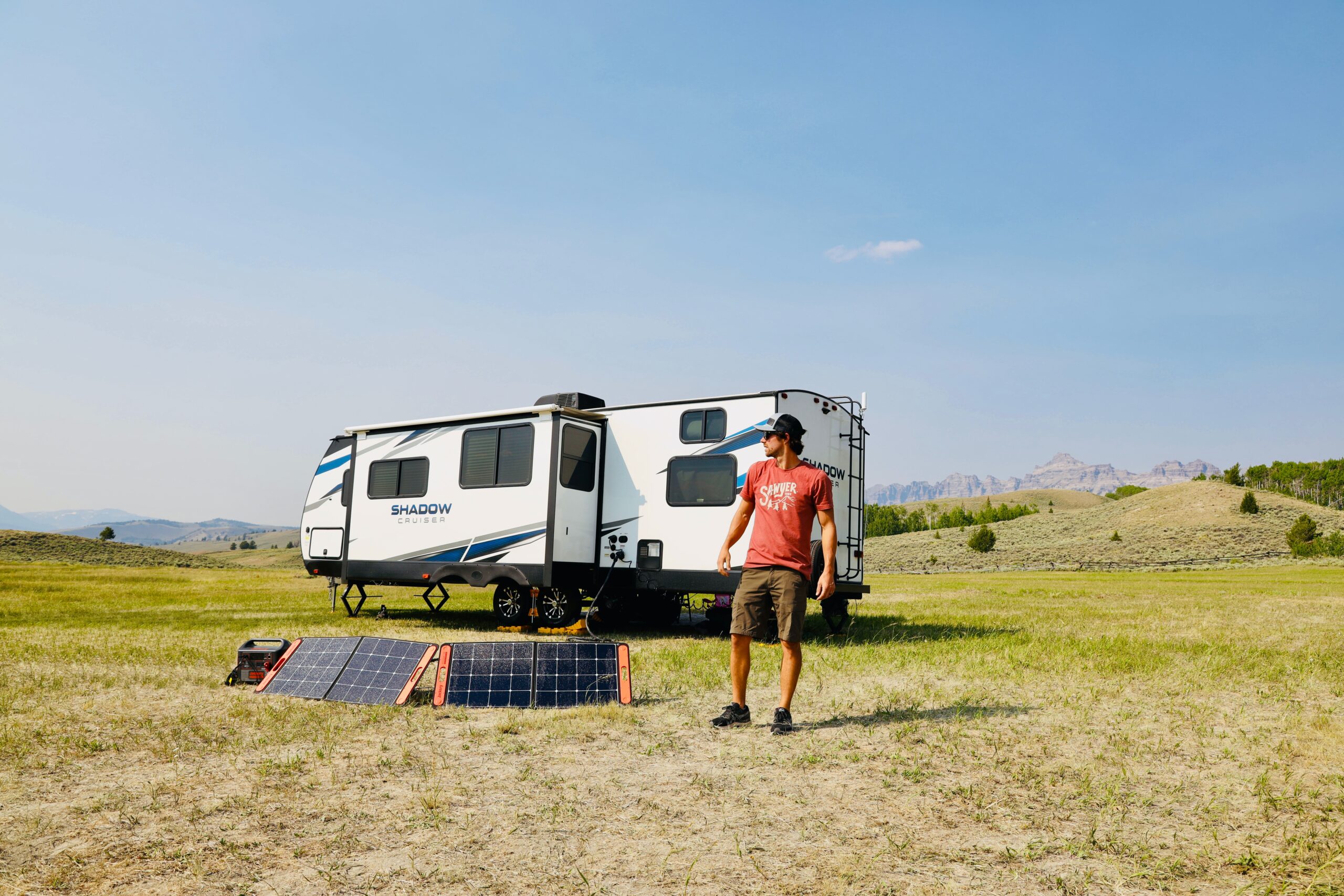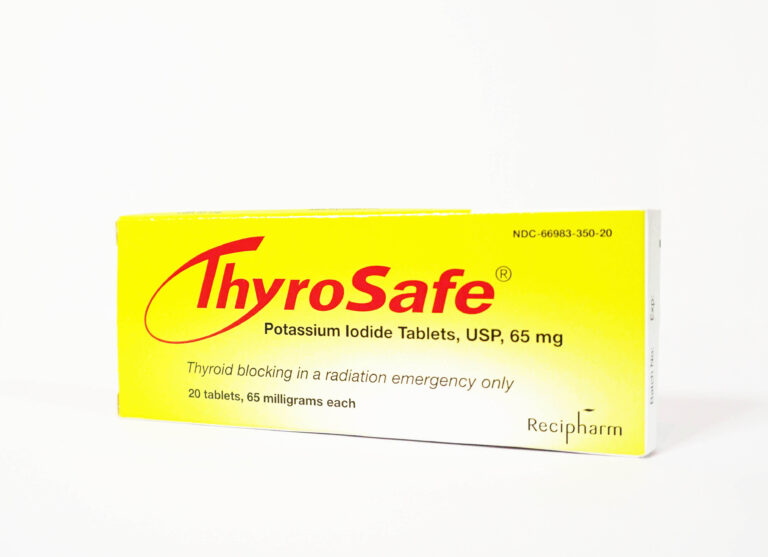With the dramatic changes in climate fluctuation as of late causing record-breaking heatwaves, cold temperatures and flooding many people are wondering is it worth getting a portable solar generator? The simple answer is yes.
The reasons for getting a portable solar generator are many. When compared to portable gas-powered generators, you don’t have to worry about the additional running costs associated with the latter such as buying fuel. Maintenance is also nonexistent unlike that of a gas-powered generator. Portable Solar Generators will range from $200 on the low end to around $2,700 for the larger high-capacity models. A solar generator is only deemed such when solar panels are attached to a power station.
Recently, many Texans went through a situation with exceedingly cold temperatures and the power grid failed to be reliable in the face of it. Texans were without power in freezing temperatures for upwards of a week. Only those with gas powered generators and ultra-expensive battery backup systems costing upwards of $6,000 – $10,000 on average had peace of mind.
As of this writing in order to have battery back up from Tesla known as a `Powerwall’ you need to also have solar installed by Tesla.
Remember: Power Station Only Becomes a Solar Generator When Solar Panels Are Attached.
BEST NEW PORTABLE POWER STATION FOR HOME USE
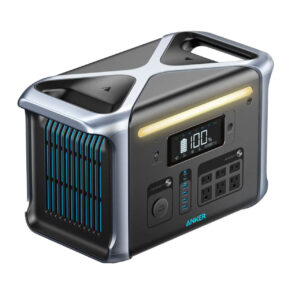
Build Quality:
- Lithium-Ion Phosphate Battery – Rated for 3,000 charging cycles
- Capable of charging to 80% in one hour
- 5-year guarantee on battery
- Metal ascents on the edges and carry handles on both sides
- High quality plastic
- Big rubber feat on the bottom
- Build with very sturdy aluminum frame
Ports:
- Solar and AC input on the back of unit. (Both have flaps got keep out dusk and debris)
- Large LED display on the front
- Car socket output on the front of unit
- 4 USB-A ports and 2 USB-C
- 6 AC outputs
- Also comes with light switch that powers LED Light at the top of unit at various different brightness settings
Vitals:
- Holds 1229WH of Power
- 2400W power surge
- 1000W input
- Charges 0 – 80% in 1 hour
- Charges 0 – 100% in 1.5 hours
- Charges off solar panels in approximately 4 hours
- 120W – USB-A
- 100W – 1 USB-C
- 60W – 1 USB-C
- 1500 – AC outlets (Pure Sine-Wave)
PROS:
- Lithium ION- Phosphate battery rated at 3,000 charging cycles
- Can charge from 0 – 80% in 1 hour
- 5-year guarantee on battery
- Carry handles on both sides
- A flat top making it easier to store when not in use
- Built with sturdy aluminum frame
- Anker is longstanding pioneer in battery charging with 200 million products sold worldwide and trusted by more than 80 million customers
CONS:
- Could use a few more USB-C ports
- Lithium-Ion Phosphate battery makes unit heavy
- Could use AC input cover flaps to protect against debris getting in
- Not the most battery capacity in category when compared to other competitors
The advantages of owning a portable Power Station vs. portable Gas Generator:
- Unlike a gas-powered generator, a home battery / power station does not need fuel.
- Should the stored battery charge run out in a home generator it can be re-charged by hooking up solar panels during the day.
- There is no need to mess around with a choke or pulling a charge cord to start the solar generator.
- Portable battery generators (sometimes called power stations) are quiet and can be run safely indoors.
- Portable battery home generators can be more cost effective in the long-run. Gas powered portable generators can use upwards of 3-4 gallons of gas per hour.
The disadvantages of a portable Power Station vs. portable Gas Generators:
- Solar charging of the battery requires optimum sunlight. May have difficulty charging if skies are over cast / cloudy.
- On the whole, portable battery generators tend to be more expensive to purchase when compared head-to-head against a similar but more noisy and less convenient portable gas powered generator.
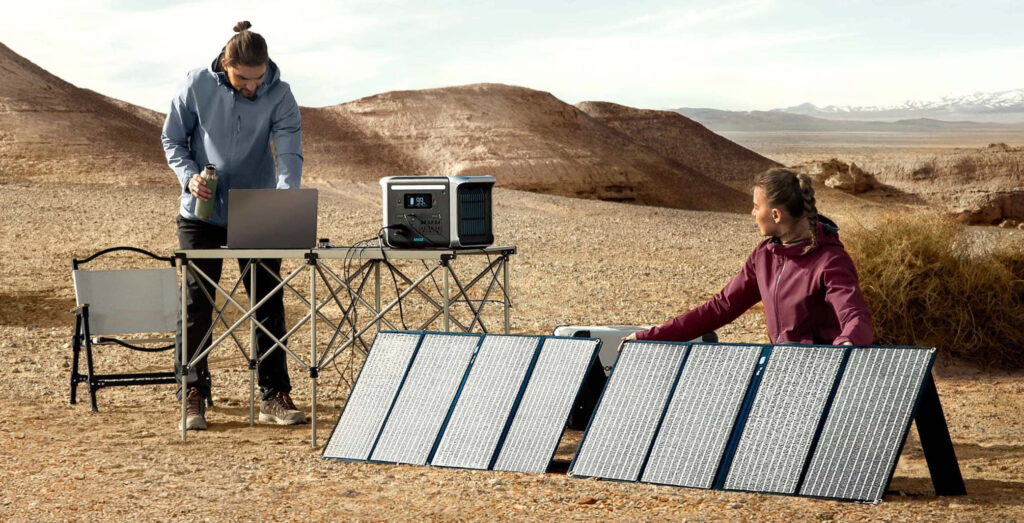
What Can I Power with a Portable Battery Generator?
Many household appliances can be powered with a home battery / power station. The size and number of items you can power and charge at any one time depend up on the battery capacity in terms of watt-hours known as (WH) and the amount of power surge the unit can handle upon first starting up the appliance or tool.
For example, if you have a portable A/C unit that is 400 watts but has an initial power surge of 2400 watts to start it, a small portable battery generator that is 500 watts with a 1,000-watt surge would not be able to handle the power needed to start the A/C unit thus the portable battery generator would shut down and not work.
On the other hand, if you had a portable generator that was at least 1500 watts and with a minimum 2400 surge, you would easily be able to power the portable A/C unit.
Here is a rundown of a few household items a portable power station / battery generator with at least 1500 watts of output and a minimum 2,000-watt surge could easily power.
• A/C (Window type unit) – 900 – 1440 watts
• 55 – 65-inch TV: 120 – 130 watts
• Washing machine: 500 watts
• Laptop: 40 – 100 watts
• Microwave: 1000 – 2000 watts
• Coffee maker: 800 – 1400 watts
• Refrigerator / freezer: 600 – 700 watts
• Air Fryer: 1500 watts
• Fish aquarium pump: 20 – 50 watts
• Electric blanket: 135 – 200 watts
• Hair Dryer: 1200 watts
• Desktop Computer: 100 – 400 watts
• CPAP machine: 3- 60 watts
How Many Hours Does a Portable Power Station Work?
The number of hours a solar generator will work depends upon the total input watts you are choosing to run at a given time.
If you are powering a 100-watt desktop computer, while you also have a 30-watt fish aquarium plugged into a generator add up 100 + 300 for a total of 300 watts. If the generator you purchased has a capacity of 1500wh (wh=watt hours) then divide this number by 300 and you should come up with 5. This means your generator should be able to power a 100-watt desktop computer along with a 30-watt fish aquarium for approximately 5 hours before the portable generator runs out charge.
Key Benefits of Portable Home Generator with Lithium Ion-phosphate (LiFePO4) battery:
- Lithium Ion-Phosphate stays much cooler in higher temperatures.
- Lithium Ion-Phosphate is non toxic and easier to dispose of.
- Lithium Ion-Phosphate can hold its charge longer
Should I purchase Solar Panels with a Battery Power Station?
If you can afford to, yes you should purchase solar panels with your portable power station. Solar panels are what make your power station a solar generator. The reason why portable battery generators are often referred to as solar generators is because you are able to attach solar panels via an input slot somewhere on the unit in order for the discharged lithium battery to be recharged. This is one of the main highlights of owning a solar generator.
Many companies will offer bundled packages that come with both a portable power station and solar panels. Of course, when there is not enough light outside this will not work so the battery will need to be recharged via an AC outlet in the home.
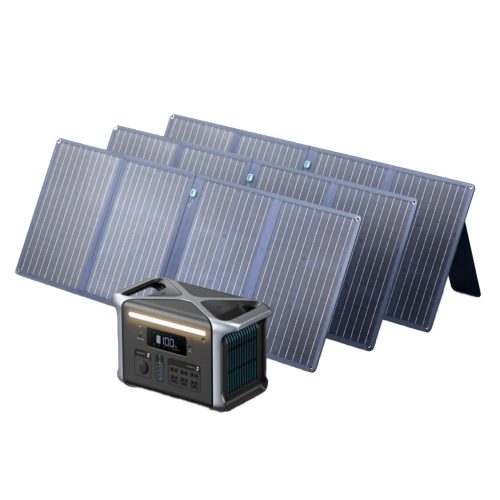
Portable Power Station Checklist before purchasing:
- What is intended purpose, camping, home emergency, fishing trip, Blackout emergency? Power Stations 500 – 1,000wh are suitable for camping. You will want 1,000wh and above in case of home power outage such as a rolling blackout or power grid failure.
- Consider weight of unit (generally coincides with battery capacity and battery type i.e.lithium ion vs lithium ion phosphate)
- Is the battery lithium Ion or Lithium-ion phosphate. Lithium ion-phosphate batteries are heavier but hold their charge longer over a period of time.
- How many 120-volt outlets are there on the power station / generator, you’ll want a minimum of 4 for household emergency use.
- How many USB-A and USB-C ports are there. We recommend having at least 2 of each.
- We recommend having a universal solar panel input connection instead of a proprietary one. This way you can try panels from different manufactures should you choose to do so.
- Some portable power stations can be daisy changed to provide even more power. See if your model has this ability. An example of this would be the Ecoflow model.
- If you go camping quite a bit, we recommend a model that has flat top in case you need to pack stuff tightly in a vehicle for the trip.

